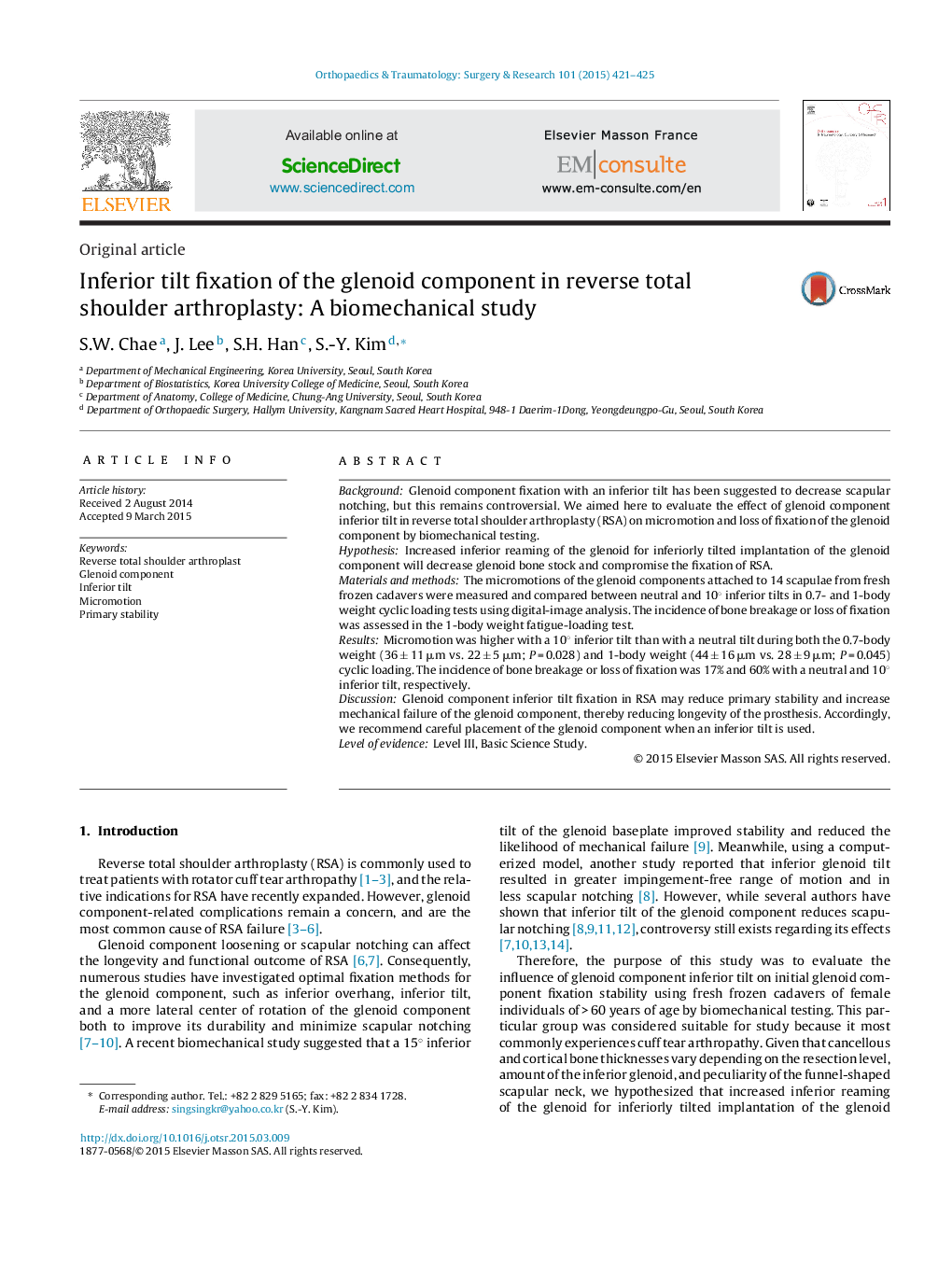| Article ID | Journal | Published Year | Pages | File Type |
|---|---|---|---|---|
| 4081071 | Orthopaedics & Traumatology: Surgery & Research | 2015 | 5 Pages |
BackgroundGlenoid component fixation with an inferior tilt has been suggested to decrease scapular notching, but this remains controversial. We aimed here to evaluate the effect of glenoid component inferior tilt in reverse total shoulder arthroplasty (RSA) on micromotion and loss of fixation of the glenoid component by biomechanical testing.HypothesisIncreased inferior reaming of the glenoid for inferiorly tilted implantation of the glenoid component will decrease glenoid bone stock and compromise the fixation of RSA.Materials and methodsThe micromotions of the glenoid components attached to 14 scapulae from fresh frozen cadavers were measured and compared between neutral and 10° inferior tilts in 0.7- and 1-body weight cyclic loading tests using digital-image analysis. The incidence of bone breakage or loss of fixation was assessed in the 1-body weight fatigue-loading test.ResultsMicromotion was higher with a 10° inferior tilt than with a neutral tilt during both the 0.7-body weight (36 ± 11 μm vs. 22 ± 5 μm; P = 0.028) and 1-body weight (44 ± 16 μm vs. 28 ± 9 μm; P = 0.045) cyclic loading. The incidence of bone breakage or loss of fixation was 17% and 60% with a neutral and 10° inferior tilt, respectively.DiscussionGlenoid component inferior tilt fixation in RSA may reduce primary stability and increase mechanical failure of the glenoid component, thereby reducing longevity of the prosthesis. Accordingly, we recommend careful placement of the glenoid component when an inferior tilt is used.Level of evidenceLevel III, Basic Science Study.
